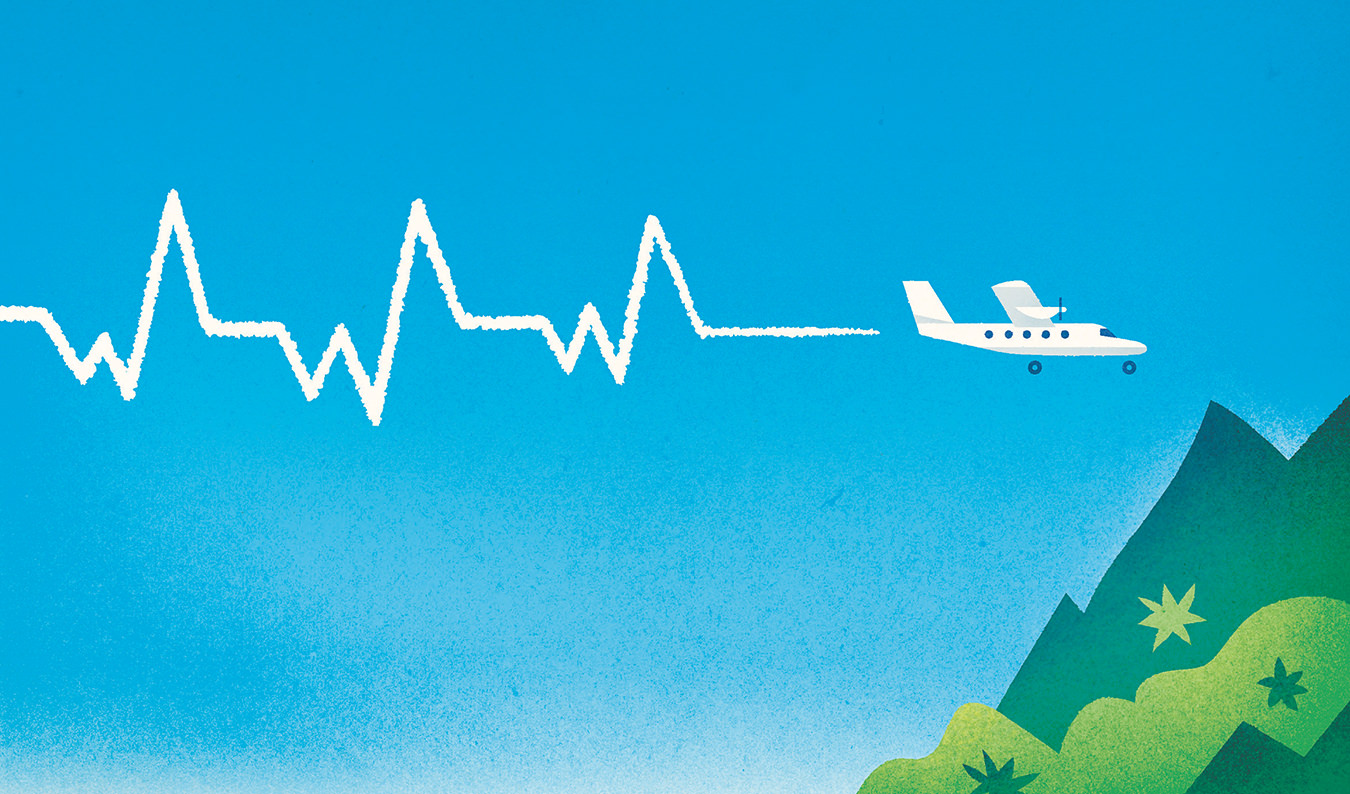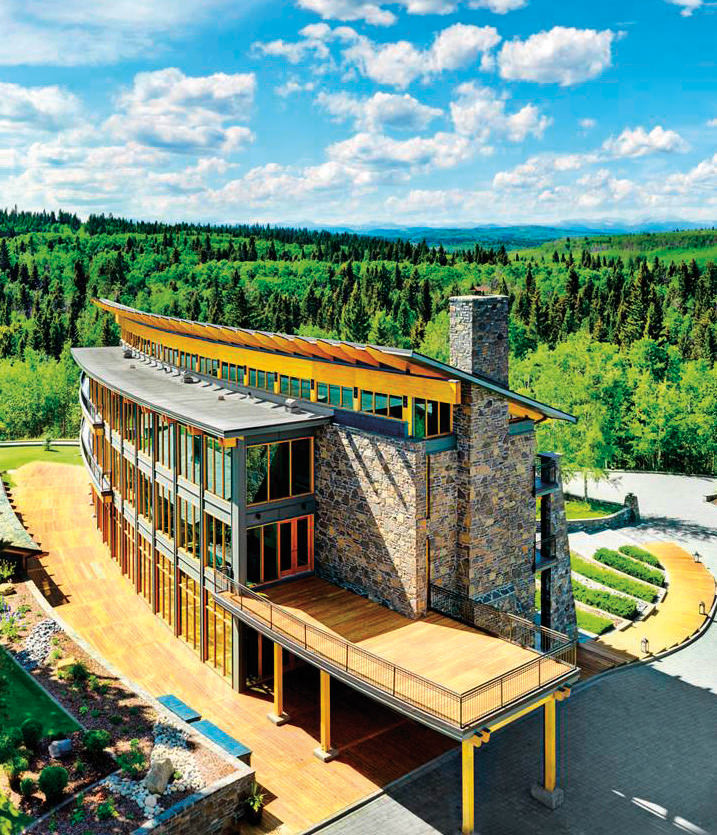A Tale of Three Fairmonts: A Road Trip Through the Rocky Mountains
Alberta is home to a few former railway hotels worth the drive.
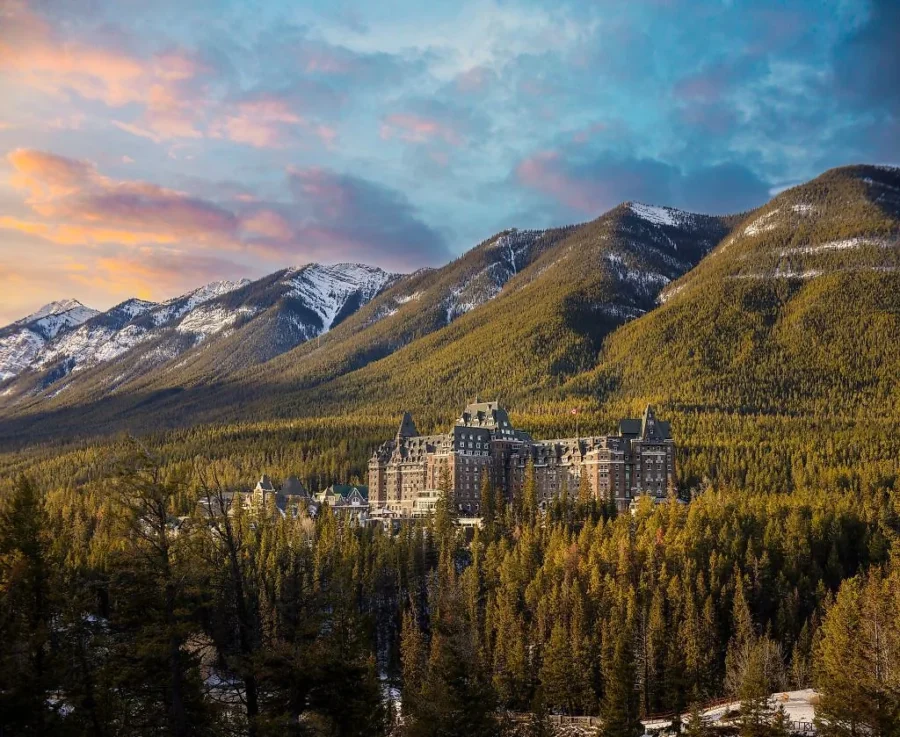
Fairmont Banff Springs
Lake Louise’s glacier-fed water—so blue it almost glows—quietly laps against the shore. It’s early in the morning, just after 8 a.m., and only a few bundled-up tourists are going for walks around this iconic Banff National Park landmark. The lake is a crisp 6°C.
“I’ll begin the timer when you put your feet in the water,” says a friendly guide from the Fairmont Chateau Lake Louise, which sits at the edge of the lake. She is guiding a polar plunge experience in the frigid water, and the goal is to last three minutes—at which point, participants experience the full health benefits of a cold plunge (increased circulation, decreased inflammation, and crucially for this moment, an endorphin boost).
The first few steps into the lake are slippery and shallow along the outer rocks, but before long it gets deep, and there is nothing left to do but immerse. A cold sensation ripples through the body like lightning.
“How do you feel?” the guide cheerily calls from the shore. Words prove hard to come by.
A man wearing a Kentucky jacket walks by with his wife and stops to watch.
“Y’all are bad to the bone,” he says in a charming Southern drawl.
“And that’s three minutes!” the guide exclaims.
This polar plunge excursion—available to all guests of the Fairmont Chateau Lake Louise—marks the halfway point of a weeklong exploration of Alberta’s Rocky Mountains. It’s easily one of Canada’s most epic road trips, punctuated by the craggy peaks and spindly trees of this world-famous range. Spanning two national parks and three historic railway-turned-Fairmont properties, it’s an adventure equal parts luxurious and awe-inspiring.
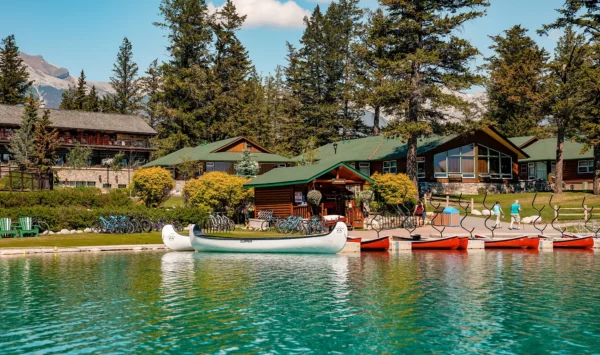
Part 1: Fairmont Jasper Park Lodge
It begins in Jasper National Park. The easiest way to get here is to fly into Edmonton and then drive about three and a half hours, but another option is to drive the whole stretch, exploring Canadian towns along the way.
Jasper National Park suffered a devastating wildfire in summer 2024, and the memory of it is never far from peoples’ minds, with swaths of burnt trees visible throughout the park and temporary trailer encampments erected for those who lost their homes. Still, the overall mindset is one of positivity: this town relies on tourism, and it welcomes it back. Located within the park, the town of Jasper is small and quaint, with great eateries such as Otto’s Cache (an excellent spot for a coffee and a sandwich). A short drive outside of town is the Fairmont Jasper Park Lodge, on the shore of the blue-green Beauvert Lake.
The property dates back to 1915, when it was a modest cluster of 10 pitched tents that each cost $2.50 per night. After the First World War, it was taken over by the Canadian National Railway and reopened in 1922 as a luxury resort with log bungalows and an impressive dining hall built from local stone and trees cleared on-site. Over the years, it has played host to many notable names, including Sherlock Holmes author Arthur Conan Doyle and movie star Marilyn Monroe, who was escorted off of the property by two Mounties because she was dressed too casually. There is a photo in the hotel to prove it.
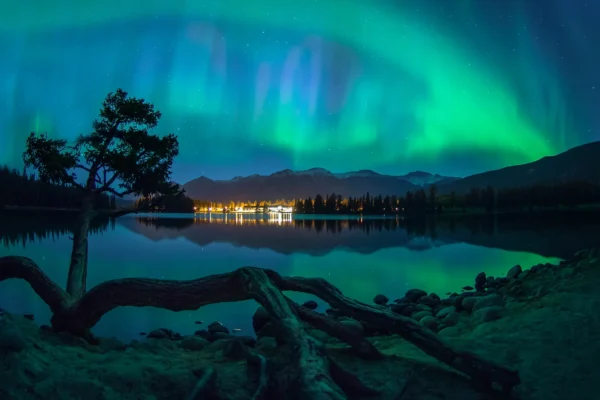
Today the Fairmont Jasper Park Lodge honours its history with the same mission: to bring people to this incredible place while offering the world-class hospitality Fairmont is famous for (including some incredible food, such as the when-in-Alberta tomahawk steak with grilled broccolini in The Great Hall and the fresh, herbaceous house-made cavatelli at Orso Trattoria).
The 700-acre property is ripe for exploring Jasper National Park—so magnificent that it’s been named a UNESCO World Heritage Site—whether it’s in a canoe on Beauvert Lake, on a bike around the golf course (where it’s not uncommon to spot elk or even bears), or via a wander through the nearby forest.
The Jasper Planetarium, also located on-site, offers nightly stargazing. Jasper is the second-largest Dark-Sky Preserve in Canada, making it an incredible place to learn about and watch the stars. On lucky nights, the northern lights might even make an appearance. As their silvers dance along the night sky, it’s hard not to feel like one is witnessing actual magic.
___
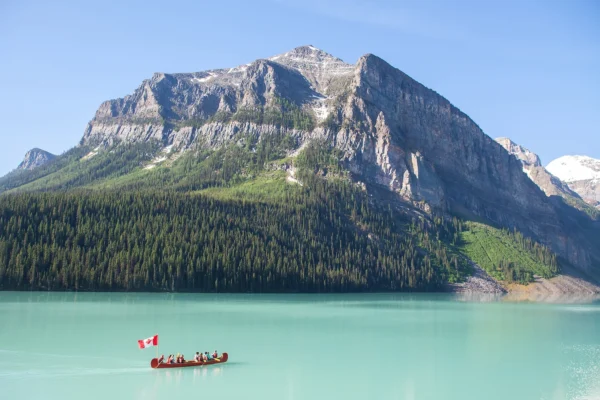
Part 2: Fairmont Chateau Lake Louise
From Jasper, it’s on to Lake Louise via a drive along the iconic Icefields Parkway, which connects Jasper National Park with Banff National Park. This is not a three-hour drive to rush through—it is one to enjoy at leisure, stopping at the sights along the way: the vast and otherworldly Columbia Icefield, highlighter-blue Peyto Lake, powerful and expansive Mistaya Canyon. After meandering along the parkway, check into the Fairmont Chateau Lake Louise, a property opened in 1890 by the Canadian Pacific Railway. The vision of CPR president William Van Horne—who famously said that “if we cannot export the scenery, we shall import the tourists”—the hotel was built as a draw for luxury travellers taking the train across the country.
Located on the edge of the famous lake named for Princess Louise Caroline Alberta, the fourth daughter of Queen Victoria, today the hotel stands the test of time as a place for adventure-seekers and wellness buffs alike. Those looking for something leisurely can rent an iconic red canoe and take it onto the lake or visit the brand-new Basin Glacial Waters spa for an elevated wellness experience. Delving deeper into nature, the Fairmont offers guided hikes around Moraine Lake, which, to keep tourism at a sustainable level, is now only accessible via registered tour vehicles.
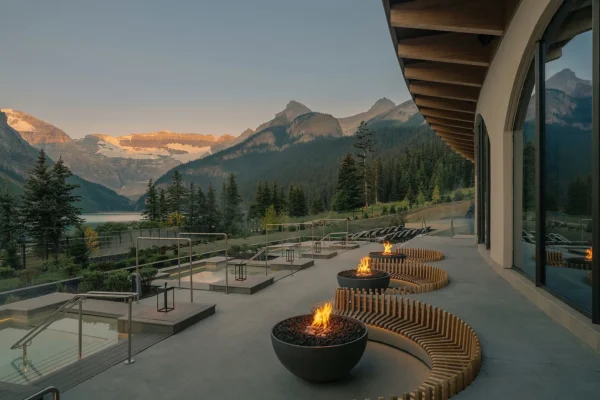
Larch season is a fleeting period of just a few autumn weeks that sees the needles of the larch trees surrounding Moraine Lake turn vibrant gold before being shed. If lucky enough to visit during larch season—“It’s Larch Madness,” one guide jokes—it’s worth booking a hike to Larch Valley, which takes explorers high above Moraine Lake. In an open meadow of glowing trees, this author spots three mule deer munching lazily on mushrooms.
Back at the hotel, delicious food abounds at the Lakeview Lounge (the tableside Caesar salad with Montreal-style roasted chicken is a must), Louiza (the Greek salad with a side of harissa chicken is pure joy), and the Fairview Bar (the roasted kombucha squash with tomato and lentils is a surprise highlight). Each space boasts postcard-perfect views of the lake, framed by the expansive Victoria Glacier behind.
___

Part 3: Fairmont Banff Springs
From Lake Louise, it’s just 45 minutes to the town of Banff, where the Fairmont Banff Springs makes its home a short walk from the high street. Open since 1888, the hotel is another Canadian Pacific Railway property that was designed to draw tourists to the majesty of the Rockies. Back then, it was constructed out of wood—which might explain why it burned down in 1926, only to be rebuilt with its current castle-like structure, using stone from nearby Mount Rundle, in 1928.
In the Roaring Twenties, people often stayed for months, spending their days soaking in the natural hot springs (hence the hotel name), feasting on elaborate banquets, and dancing to live bands in the giant ballrooms. It was not until the 1970s that the hotel stayed open over the winter season, capitalizing on the growing appetite for skiing, with three hills—Lake Louise, Banff Sunshine, and Mount Norquay—all within easy driving distance.
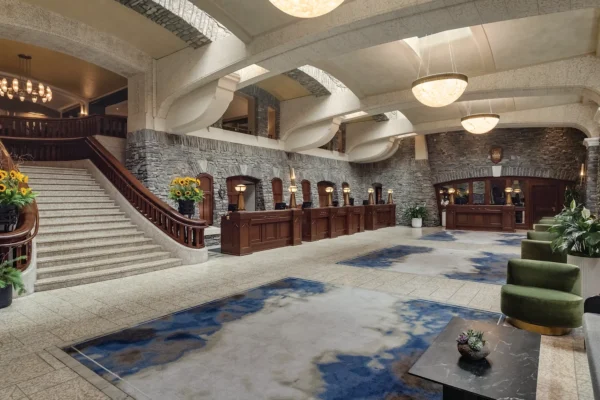
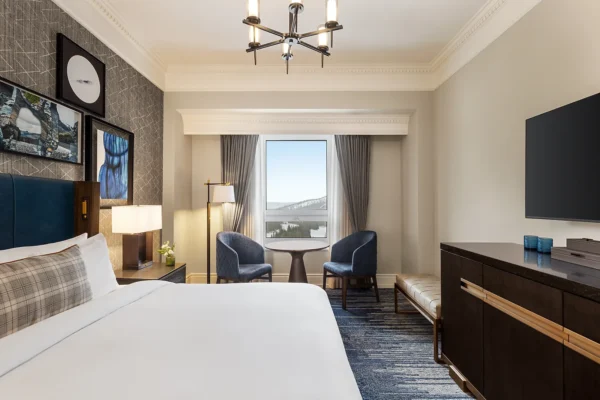
The hotel today is something of a time capsule, with spiral staircases made of 430-million-year-old Manitoban limestone dotted with fossils of ancient sea creatures, and large, ornate ballrooms (one with an original hardwood floor from the 1920s). Among this history is a sense of contemporary luxury, evident in the guest rooms as well as the dining areas—from the gorgeous, high-ceilinged Rundle Bar, where cocktails range from The Castle Classics to The Explorer’s Collection for adventurous palates, to 1888 Chop House, where guests can indulge in steak from Alberta’s famed Brant Lake farm or try the restaurant’s signature (and excellent) bison tenderloin, served with morels, farro, beetroot, and blackberry.
For venturing deeper into Banff National Park—also a UNESCO World Heritage Site, and Canada’s first-ever national park—the hotel offers an array of excursions. The Banff Scenic Insta Tour visits some of the park’s most stunning viewpoints, including Surprise Corner (offering a blockbuster look back at the Banff Springs), Lake Minnewanka (which has a sunken town at the bottom of it, making it popular for scuba diving), and Sacred Sleeping Buffalo Mountain (which gets its name, given to it by the local First Nations, for its unmistakable animal shape). There is also the peaceful Fairmont Spa, which features a large mineral pool along with a series of hot and cold tubs and waterfalls—an easy place to spend an afternoon.

These historic Fairmonts are each worthy destinations on their own, but there is a special magic in experiencing all three of them in one trip. It’s a pilgrimage of sorts—a way to discover the country’s industrious railway past and to experience the arresting natural beauty that brought tourism here in the first place.



